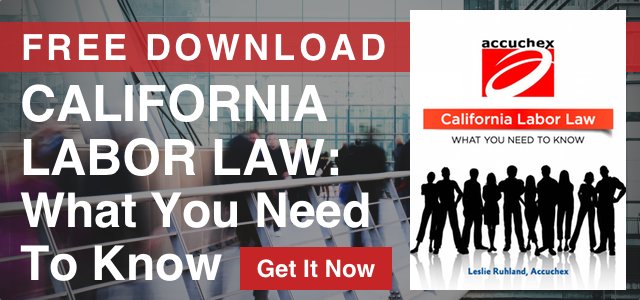
In a recent labor law case over employee versus independent contractor status, airport shuttle provider SuperShuttle International is going up against the state Employment Development Department, which had forced SuperShuttle to pay employment taxes for drivers whom the state said should have been compensated like employees.
The EDD charged SuperShuttle more than $783,000 for failing to pay into state unemployment insurance and disability funds on behalf of drivers from 2006 through 2009. In 2014, SuperShuttle sued the EDD. The case is set to be heard in September.
"It's not about the money. It's about the EDD’s effort and desire to eliminate the independent contractor status in the state of California," said Alan Moldawer, the general counsel for Transdev North America, the French transportation company that acquired SuperShuttle in 2006.
Employers and the Most Common Employee Lawsuits
Although most employers would like to think that they conscientiously follow the labor law, many California employers find it to be challenging.
In fact, many business owners and their employees often unknowingly break federal and state employment laws. Unfortunately, this can result in employee claims which can lead to time-consuming and costly legal lawsuits.
Despite the best efforts and intentions of employers in California, avoiding employee lawsuits can be challenging. And while there are multitudes of employer violations that can be committed - knowingly and otherwise - there are a few common ones that make up the bulk of legal cases.
When It Comes to Labor Laws, California Employers Must be Cautious
Most employers think they follow laws to a tee. However, many business owners and their employees are unknowingly breaking federal employment laws, which can lead to time-consuming and costly legal lawsuits.
Here are the four most common employee claims made against employers nationwide, according to statistics from the EEOC:
1. Discrimination
The most common form of employee lawsuits are discrimination claims. According to the U.S. Equal Employment Opportunity Commission (EEOC), a federal organization tasked with enforcing these laws, they received almost 94,000 of discrimination claims in 2013 alone.
The EEOC tracks the many forms of discrimination and all alleged cases, particularly those concerning protected categories like race, sex, nationality, religion, sexual preference, age or disability.
2. Discriminatory Discharge
Discriminatory discharge occurs when an employee is either fired or laid off because he or she falls into a legally protected category, as listed above. The EEOC website states that:
An employer may not take into account a person's race, color, religion, sex (including gender identity, sexual orientation, and pregnancy), national origin, age (40 or older), disability or genetic information when making decisions about discipline or discharge.
When deciding which employees will be laid off, an employer may not choose the oldest workers because of their age.
Employers also may not discriminate when deciding which workers to recall after a layoff.
3. Retaliation
Retaliation often occurs in the context of a discharge. An example would be firing an employee due to his or her engagement in a legally protected activity, such as:
Filing a claim of discrimination
Participating in an investigation of such a claim
Refusing to commit an illegal act, such as refusing to lie during an investigation
Retaliation can also occur without a discharge. In fact, almost any adverse action committed against an employee involved in a claim is illegal.
4. Harassment
Harassment includes offensive conduct relating to any of the above mentioned categories (i.e. gender). It also includes offensive jokes, objects or pictures, name-calling, physical assaults, threats and anything else that might interfere with one's performance at work. This type of conduct can create an intimidating, hostile, or abusive environment.
The harasser can be anyone that is associated with the workplace, including full-time employees or contractors. Anyone can lodge a harassment complaint, regardless of whether they witnessed it or were the recipient of it.
Help With Complying With California and Federal Labor Law
If your organization would like to learn more about its obligations, or acquire resources to deal with these types of situations, Accuchex recently partnered with HR Solutions Partners to offer its customers the most up-to-date and professional human resources management solutions available.
To learn more about the different levels of Human Resource Management services available, please follow this link.
To learn more about the services Accuchex provides, click on the button below to download our free guidebook.


